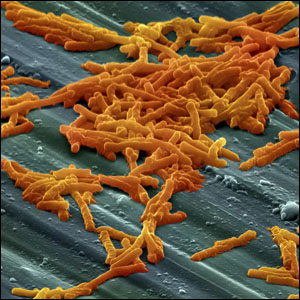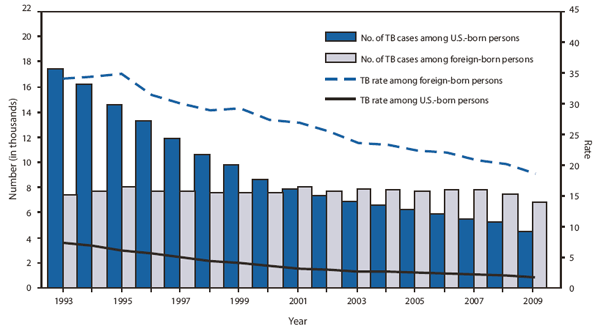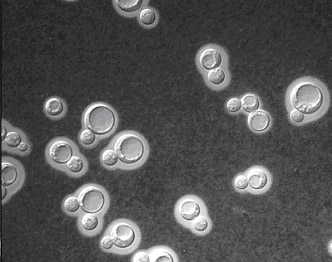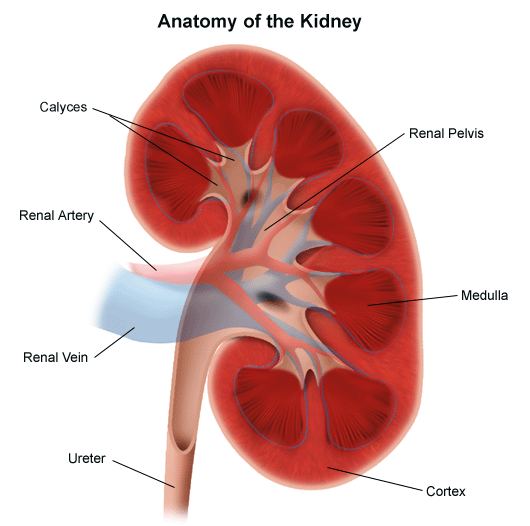An ongoing dialogue on HIV/AIDS, infectious diseases,
May 4th, 2010
Zoster Vaccine Underutilized
 From the Annals of Internal Medicine:
From the Annals of Internal Medicine:
Eighty-eight percent of providers recommend herpes zoster vaccine and 41% strongly recommend it, compared with more than 90% who strongly recommend influenza and pneumococcal vaccines. For physicians in both specialties [Internal Medicine and Family Practice], the most frequently reported barriers to vaccination were financial.
From my admittedly biased perspective as an ID doctor, recommending the zoster vaccine is a no-brainer. The cases of zoster I see are severe, and complicated, and people with post-herpetic neuralgia (who sometimes find their way erroneously to our clinic) are miserable.
But I’m also biased in that I’m not in a private, independent practice, and hence not responsible for getting reimbursed for giving a vaccine with irregular insurance coverage and finicky storage requirements.
So my guess is that were the vaccine universally covered (i.e., “free”), that there would be much broader uptake.
After all, for most Americans over 60, which is more likely to prevent illness — the zoster vaccine or the tetanus booster?
April 24th, 2010
Choosing an Official State Microbe
 Wisconsin has selected Lactococcus lactis as its official state microbe:
Wisconsin has selected Lactococcus lactis as its official state microbe:
The people of the state of Wisconsin, represented in senate and assembly, do enact as follows: SECTION 1. 1.10 (3) (t) of the statutes is created to read: 1.10 (3) (t) The bacterium Lactococcus lactis is the state microbe. SECTION 2. 1.10 (4) of the statutes is amended to read: 1.10 (4) The Wisconsin Blue Book shall include the information contained in this section concerning the state song, ballad, waltz, dance, beverage, tree, grain, flower, bird, fish, animal, domestic animal, wildlife animal, dog, insect, fossil, mineral, rock, soil, fruit, and tartan, and microbe.
As any self-respecting Packer fan could tell you, Lactococcus lactis is a critical part of making cheese, in particular the state’s famous cheddar.
And though the bill passed last week, I have three remaining very important questions:
- What were the other contenders? When I think Wisconsin and microbes (which I do several times a day), probably the first bug that occurs to me is Borrelia burgdorferi (Wisconsin is a notable non-New England/Mid-Atlantic epicenter for Lyme Disease), followed shortly thereafter by Diphyllobothrium latum (think various marinated and uncooked fish popular in northern European diets). Did these get any votes?
- What will Massachusetts choose? I could see Erysipelothrix rhusiopathiae, though perhaps Maine has a stronger claim to this lobster-related bacterium than we do — we’d better have a back-up in place, such as Babesia microti or Cyclospora cayetanensis, though for the latter the reference might be a bit obscure.
- Will other states go for the obvious choices? Legionella pneumophila for Pennsylvania, Coccidioides immitis for Arizona, Vibrio vulnificus for Louisiana, etc. You get the idea.
Finally, note that Wisconsin has both a state mineral and a state rock. In these tough economic times, you would think one or the other would be sufficient.
April 22nd, 2010
Should Transmission of HIV be a Crime?
 Not according to Journal Watch editor and New York Times writer Abigail Zuger, writing here in the Times. She’s referring to the recent Darren Chiacchia case, where his former partner has filed a legal complaint that Chiacchia did not disclose having HIV — potentially a first-degree felony in Florida.
Not according to Journal Watch editor and New York Times writer Abigail Zuger, writing here in the Times. She’s referring to the recent Darren Chiacchia case, where his former partner has filed a legal complaint that Chiacchia did not disclose having HIV — potentially a first-degree felony in Florida.
Were it a matter of science alone, all those AIDS statutes could be rescinded tomorrow. But the science was only a small part of the panic that created them. And effective treatment has not altered the rest of that potent emotional brew: the virus still sows terror, uncertainty, shame and endless complications, whether the infection is concealed or revealed…
Now we think we know better, but do we really? We blame that coughing woman in the subway for our cold, the giant meat company for our food poisoning, all manner of chemicals and electromagnetic radiation for our cancers, and fast-food outlets for ourdiabetes and heart disease. We cannot experience illness without casting around for blame.
Yet at the same time we believe deeply in prevention. Surely if we watch our diets and get our mammograms and colonoscopies, wash our hands, take whatever vitamin is foremost in the news and eat our burgers well done, we can avert bad things. Whole generations have now grown up knowing that sensible people “play safe,” with the overriding implication that if you catch a sexually transmitted disease, you have no one to blame but yourself.
Then the key point:
And so whose fault is a new H.I.V. infection, really? Is it mine, for giving it to you, or is it yours, for being stupid and cavalier enough to get it?
(Sorry for the lengthy quotes, she’s such a great writer it was irresistible.)
I mostly agree with Abbie that effective treatment of HIV has changed the risk equation profoundly, and that what originally motivated these laws — transmission of HIV was murder! — no longer holds. But remember that some (most?) might think that transmission of any infection — herpes, syphilis, MRSA, salmonella from peanut butter, hepatitis A from spinach — is potentially a crime, provided there’s evidence of deceit or negligence.
And people holding this view will continue to see these HIV statutes as completely justified. As a result, don’t expect them to be removed from the books anytime soon.
April 10th, 2010
Why Are Doctors Still Carrying Beepers?
 I was going through security at the airport the other day, and tossed my beeper into one of those gray bins — along with the device that should make the beeper superfluous, a cell phone.
I was going through security at the airport the other day, and tossed my beeper into one of those gray bins — along with the device that should make the beeper superfluous, a cell phone.
“I didn’t know anyone used beepers anymore,” said the 30-something guy behind me.
What could I say? That doctors also use typewriters, buggy whips, and ice boxes?
But those are really the wrong comparisons — better is something more early-90s, like this “mobile phone.” For a while back then, beepers were quite the status symbol among the junior high school set — especially if they were made of clear, teal-colored plastic.
And while teenagers have long ago moved on, virtually every doctor I know still carries a beeper. One of my un-named colleagues (at and un-named hospital in an un-named city) became so frustrated by having to carry two devices that he hacked into his hospital’s paging system. He now gets pages on his cell phone as text messages.
(He says texts over cell phones are sent via the same technology as pages. Who knew?)
This article discusses some reasons why beepers have certain advantages over other wireless systems. But that was two years ago, and given advances in cellular technology, I find it hard to believe those advantages wouldn’t quickly be overshadowed by all the obvious benefits of a cell phone, particularly a modern smart device.
I, for one, would be happy to trade mine in. Just say the word.
March 31st, 2010
C diff Guidelines: Metronidazole Still Preferred?
 IDSA and The Society for Healthcare Epidemiology of America (SHEA) have published Clinical Practice Guidelines for Clostridium difficile infection.
IDSA and The Society for Healthcare Epidemiology of America (SHEA) have published Clinical Practice Guidelines for Clostridium difficile infection.
Not surprisingly, it’s a comprehensive, extensively-referenced document that will be an invaluable resource, especially since the previous version is approximately 15 years old.
But with the caveat that I’m not an expert in this area, these particular treatment recommendations continue to perplex me:
Metronidazole is the drug of choice for the initial episode of mild‐to‐moderate Clostridium difficile infection (CDI). The dosage is 500 mg orally 3 times per day for 10–14 days.
Vancomycin is the drug of choice for an initial episode of severe CDI. The dosage is 125 mg orally 4 times per day for 10–14 days.
In what other diseases do we recommend something different for mild vs. severe infection, when both are oral options? I understand there is a cost difference, but since the data on treatment of severe CDI demonstrate the superiority of vancomycin, is this the right approach? Especially since oral vancomycin is better tolerated?
Or are we still going through this widely-quoted (and frankly kind of politically incorrect!) mom vs mother-in-law dilemma?
With the intention of being provocative, what would you take if you had C diff?
March 24th, 2010
Now for Some Good News: TB Cases Continue to Decline
From the latest MMWR:

This figure speaks for itself, but two sentences from the Editorial Note deserve highlighting:
The 11.4% decrease in reported TB rate in 2009 is the largest single-year decrease ever recorded. From 1953 to 1993, the single largest annual percentage decrease in TB case rate was 11.1% in 1956
Since I started my ID career in these dark days — when we were all expecting (and some were experiencing) a cataclysmic increase in TB nationwide — all I can say is … wow.
And I’m not a bit surprised that these remarkable data have thus far received such scant media coverage, because stories about Infectious Diseases are so much more exciting when they go in the opposite direction.

 In the ongoing debate about when to start antiretroviral therapy in our sickest patients — those with acute opportunistic infections — comes
In the ongoing debate about when to start antiretroviral therapy in our sickest patients — those with acute opportunistic infections — comes  =
= .031, by log‐rank test). The risk of mortality was almost 3 times as great in the early ART group versus the delayed ART group (adjusted hazard ratio, 2.85; 95% confidence interval, 1.1–7.23). The study was terminated early by the data safety monitoring committee.
.031, by log‐rank test). The risk of mortality was almost 3 times as great in the early ART group versus the delayed ART group (adjusted hazard ratio, 2.85; 95% confidence interval, 1.1–7.23). The study was terminated early by the data safety monitoring committee. Over in Journal of Infectious Diseases, the MERIT study
Over in Journal of Infectious Diseases, the MERIT study 

